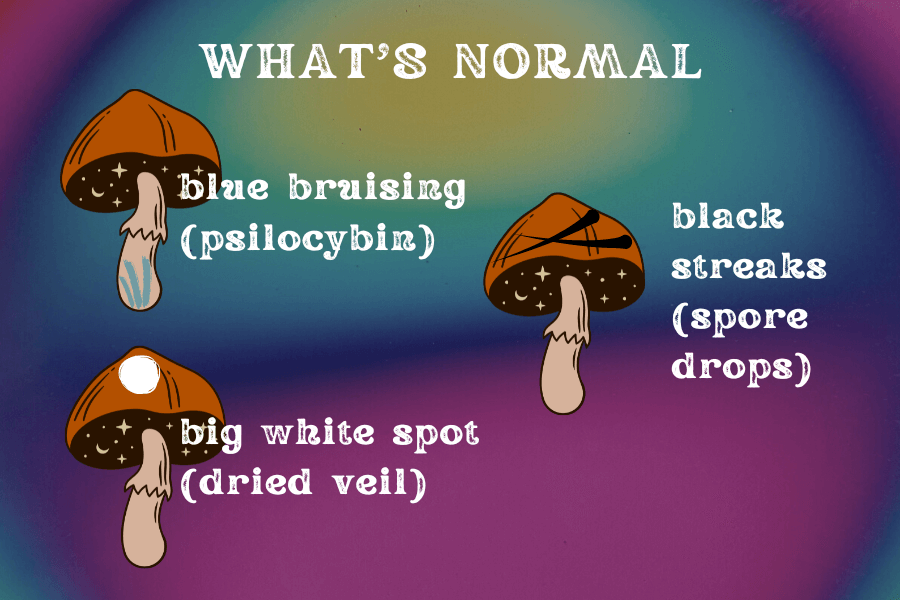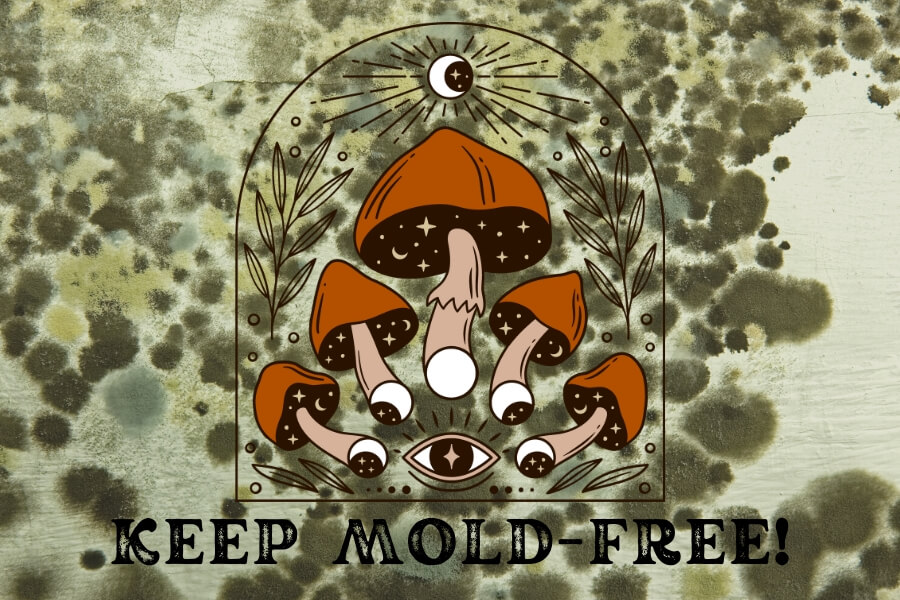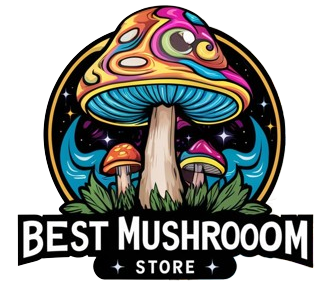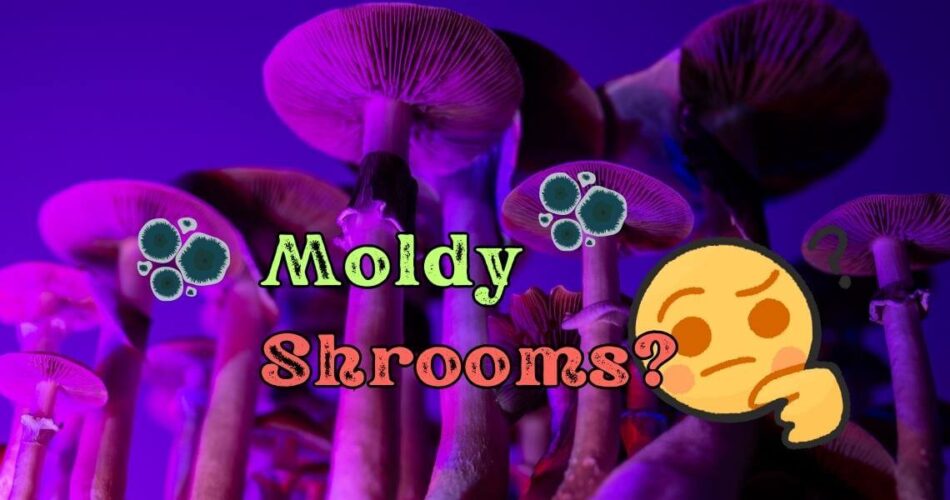Shrooms, mold, “tripping” to the hospital – what an awful story! Mold can be tricky to spot on magic mushrooms, and some people even confuse it with the blue bruising they normally get from psilocybin. Learn more and see what to do if there’s mold growth in your shroom supply.
TL;DR
- Shrooms go bad over time, and if there are contaminants in your substrate, it might happen right as they grow ⚠️
- Psilocybin mushrooms also bruise naturally, so if you see blue discoloration on the stems, don’t worry ✔️
- On fresh or dried shrooms, mold will look like fuzzy, stringy or fluffy growth – usually gray or green in color 🔍
- Bacteria or mold can also cause fresh shrooms to rot 🤢
- Always inspect your shrooms before using, no matter how you store them 🔍
What Do Moldy Magic Mushrooms Look Like?
Whether you’re dealing with fresh or dried shrooms, mold growing on them will be fluffy, fuzzy or stringy in texture. It can be green, black, or gray. You should be able to scrape it off with your fingernail. If you notice anything like that, throw the whole batch away. Visible mold is one thing, but its mycelium can penetrate through your magic mushrooms and release its toxins inside them. No psychedelic experience is worth risking your health.
Are Your Shrooms Prone to Mold? 🔍
Mushrooms this, mushrooms that… From a biological standpoint, they’re fungi, just like mold. So your psychedelic shrooms love high humidity just like their toxic counterparts. This means that whatever growing kit and substrate you’re using, there’s a chance mold could grow alongside your favorite caps.
But your mushrooms are especially prone to mold if you keep them fresh for too long. Once they’re fully grown, dehydrate them completely so they’re cracker-dry. The stems should snap like twigs. If you’re able to bend them without breaking, it means there’s still moisture in them. And that means mold or bacteria could easily grow on them.
Shrooms, Mold & Discoloration – How to Tell Them Apart?
For some newbies growing shrooms, mold can be difficult to tell apart from normal discoloration. What you should ask yourself is whether it comes off or not. Here are a few tips on what’s normal and what isn’t:

- Blue bruising on the stem – without change in texture – is perfectly normal. It means the shroom is releasing psilocybin and psilocin, so it’s a sign of potency.
- White patches on caps are also normal. Some strains of Psilocybe cubensis have what is known as universal veils. A veil is a thin membrane covering the cap, and when the mushrooms are dried, it will stick like a solid white spot.
- Black circles and “shadows” on caps are likely spore drops. They’re completely fine.
- Bruising that is also smelly, soft and/or slimy is a sign of rot. If your magic mushrooms are rotting, throw them away – it’s not safe to use them.
- Gray or green patches on mushroom caps and gills can signify mold. If they’re fuzzy or stringy, it’s almost definitely mold. Discard your mushrooms if you suspect unwanted fungal growth.
- Gray, cotton-like mycelium enveloping the mushroom is also mold – it’s a fast-growing fungus, so it can cover stuff almost overnight.
- Yellow or brown lesions on wet mushrooms are bacterial blotch.
Keep in mind that mold and bacteria can look different on fresh vs. dried mushrooms. If you ever think your mushrooms may be contaminated, ask yourself if you’ve been keeping them stored properly. Compare the abnormalities you see to the descriptions above. If it’s neither blue bruising nor white or black spots, we don’t think it’s normal. Discard the bad mushrooms to minimize the risk of sickness (and a bad trip).
How to Avoid Bacterial Contamination and Unwanted Fungi?
Depending on how you store your mushrooms, mold may or may not be able to grow on them. To minimize that possibility, put the dried mushrooms in an airtight jar or ziplock bag with 1–2 packets of desiccant. If you ever notice a change in their odor, it’s likely the mushrooms are going bad. It’s normal for them to degrade after a few months, even if you store them right. However, they shouldn’t become moldy.
Airborne mold spores are everywhere, but they need moisture in order to grow. Some mushroom products (like mushroom chocolates) are also more resistant to it and might have a shelf life of 12–18 months. Knowing how to store magic mushrooms, you can make sure shrooms & mold never mix in your pantry!

Similar Posts:
- How to Store Shrooms to Keep Psilocybin in and Mold Out
- Do Shrooms Go Bad? What Will Happen if You Consume an Expired Magic Mushroom?
- Panaeolus Bisporus (Copelandia Bisporus). All About This Mushroom Species
- Psilocybe Aztecorum: A Complete Guide to Growing and Enjoying Psilocybin
- Blue Meanie Mushroom: Spores, Potency, How to Identify Blue Meanies. Magic Mushroom Guide
- How to Dry Magic Mushrooms? Find Out How to Store and Dry Shrooms
- Dried Shrooms: All About Magic Mushrooms and Psilocybin



